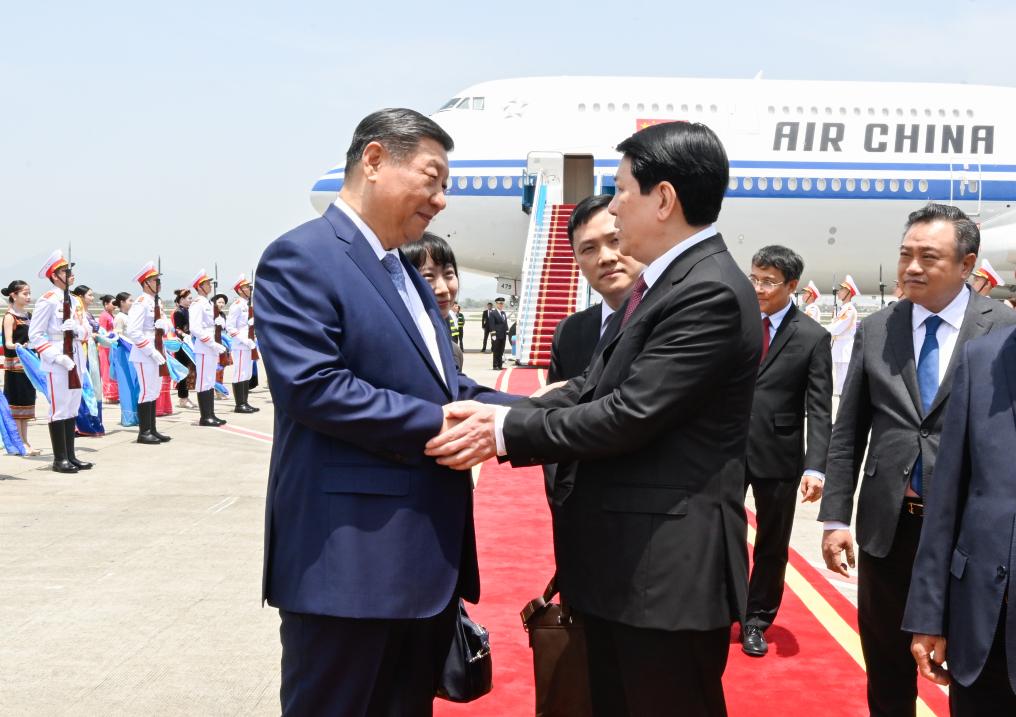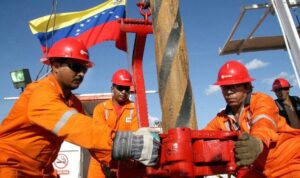
Published 14/04/2025 11:56 | Edited 14/04/2025 12:40
China’s president, Xi Jinping, landed on Monday (14) in Hanoi, the capital of Vietnam, for a state visit that marks the beginning of a Chinese diplomatic offensive in Southeast Asia. Xi was received at the airport by high -ranking Vietnamese authorities, including President Luong Cuong.
In a written statement, Chinese leader celebrated his fourth visit to Vietnam and said the two countries form “a community with a shared future of strategic importance.” The symbolic gesture has been reinforced by dozens of signed agreements, such as memorials of cooperation in productive chains, railway infrastructure, public safety, green technologies and artificial intelligence.
The trip takes place amid the tariff war between Beijing and Washington, intensified after the Trump government raises tariffs on Chinese imports to 145%. In response, China announced 125%rates, suspended critical mineral exports, and began a strategy for strengthening regional alliances.
Vietnam is today one of the main destinations of industries that migrate from China to avoid US tariffs. At the same time, Hanoi is targeted by 46% from Washington, which led Vietnam’s government to intensify negotiations with the US.
In an article published in the Official Journal Vietnameta Nhan DanXi reiterated that “commercial and tariff wars have no winners” and defended “beneficial and inclusive economic globalization.” According to the Chinese president, the world is experiencing “turbulent transformation” and Asian countries must deepen their integration in the face of the “forces of unilateralism and protectionism.”
He also urged neighbors to strengthen regional value chains, promote shared modernization and support multipolarity.
Rhetoric was accompanied by concrete actions. According to Reutersmore than 40 agreements were signed between China and Vietnam, including railroad cooperation (such as the Haiphong line and the Chinese border), clean energy, agriculture and tourism, as well as reciprocal recognition of export certificates.
Vietjet, a low -cost Vietnamese airline, has also signed a memorandum with Chinese Comac to use C909 on domestic routes, a symbolic victory for the Chinese aerospace industry.
Vietnam agreements also include strategic rail cooperation: Beijing wants to advance with Chinese loans projects such as the standard gauge railroad between Guangxi (China) and Haiphong (Vietnam), a route that can reduce the dependence of logistics chains impacted by tariffs. Another symbolic nod came from Hanoi’s decision to recognize Chinese civil aviation authority, paving the way for regular operation of Comac aircraft in the region.
The visit of the Chinese president takes place in the year in which the 75 years of diplomatic relations between the two countries are celebrated and the “year of China-Vietnam cultural exchanges”. XI Jinping will still visit Malaysia and Cambodia. According to GuardianBeijing intends to use the trip to present itself as a responsible power, contrasting with the US.
In conversation with Spanish President Pedro Sánchez, XI stated that China and the European Union should “jointly oppose unilateral acts of intimidation.” In a more incisive statement, the Chinese Ministry said the US should “completely cancel retaliatory tariffs and return to the right track of mutual respect.”
Xi Jinping’s trip to Vietnam represents more than a state visit: it is a geostrategic onslaught amid a new phase of the trade war. While the US harnesses its tariff policies and press its allies, China seeks to reposition itself as a reliable leader, defender of multilateralism and promoter of regional development. With dozens of firm agreements, symbolic gestures and a stability and cooperation -centered rhetoric, Xi reinforces his image of statesman in the face of a world of reconfiguration.
Source: vermelho.org.br

